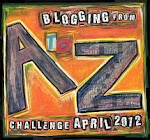H Is for Horror (for Free)
Mythopoetic Games “is dedicated to publishing a small number of free tabletop pencil-and-paper roleplaying games.” The site and the games are from the minds of Christopher Johnstone and Dean Suter. On the downloads page, Mythopoetic Games has five free tabletop RPGs. The one that we’re interested in today is Danse Macabre. Here’s the blurb:
A Roleplaying game of horror, intrigue and dark fantasy set in an alternative and dark Medieval Europe. Dark and monstrous things haunt the shadows of the forest and mountain. Old gods lurk mad and forsaken in their sacred pools. Wars between Heaven, Faerie and Hell have left all the mortal world bloodied and broken beneath the surface of things. A rot of destruction is spreading, and soon the final reckoning of creation itself may be at hand.
Five PDFs comprise this free horror RPG, and these aren’t piddly little documents typed up with large amounts of amateurishness. They are laid out in simple, readable two column format with evocative illustrations and printer-friendly goodness. The only downside to the PDFs is the lack of bookmarks, but this is really only a small complaint applicable to the Core Rules, the largest of the PDFs.

The Core Rules weigh in at about 140 pages divided into 10 chapters, including the introduction. The game uses a d6 dice pool action resolution system, and includes a nice little differentiation between subjective resolution (for things that don’t require dice rolls) and objective resolution (for things that do). Regarding the former: “The key to Subjective Resolution is acknowledging that clever ideas and well-narrated actions deserve rewards. Encouraging Subjective Resolution speeds the pace of a game considerably.”
Action resolution is by rolling the relevant number of d6 based on the appropriate trait and counting successes. Each 6 is one success, and “Easy” tasks require no roll to succeed. These traits tests can be simple (unopposed), opposed, or prolonged (for things like a foot race). Characters also have a pool of Effort points that can be spent to increase the success range for a die. For example, one Effort point makes rolls of 5 or 6 a success. Overall, this is a simple and quick action resolution mechanic, and the addition of Effort to increase success is at least close to inspired.
Character creation starts with a concept. Characters have a motivation (example: “I am an Irish wanderer, driven to seek out the mysteries of my ancient Celtic roots and beliefs.”) and an upbringing (such as noble or serf). The latter provides bonus skill points for certain skills.
In keeping with the medieval theme, characters also have “aspects of nature” that “define where you [sic] character falls in the endless wars between Heaven and Hell.” The player picks at least one but no more than three personality traits chosen from two lists: one for the Seven Heavenly Virtues and another for the Deadly Sins. Players earn Fate Points (used for character advancement and improvement) for roleplaying their PCs’ personality traits. Characters also have five background points that are spent buying Background traits that may affect skills. Skills are likewise purchased on a point system. Sorcery skills are accessed via appropriate background choices.
Further chapters detail character traits and background effects, the combat system, the magic system, the setting (which is chock full of win and sufficiently generic to fit a wide variety of game systems), an essay on roleplaying, various beasts and devils, and two short introductory scenarios.
Darkest Arts is a 10-page PDF that expands on two systems of magic, warlockry and necromancy. Another magic expansion, The Sacral and the Lost, talks about “white magic” such as angelic pacts. The wee people figure prominently in Danse Macabre, and another 10-page PDF, Faerie Lore, offers more detail about these mercurial creatures. Lastly, Tales Told by Shadows offers five short scenarios in 27 pages.
There is a wealth of good stuff in these documents. Even if you’re not inclined to play the game itself, the scenario, setting, and character background sections offer oodles of inspiration for anyone interested in running a dark fantasy game set in a horror-filled Middle Ages.

